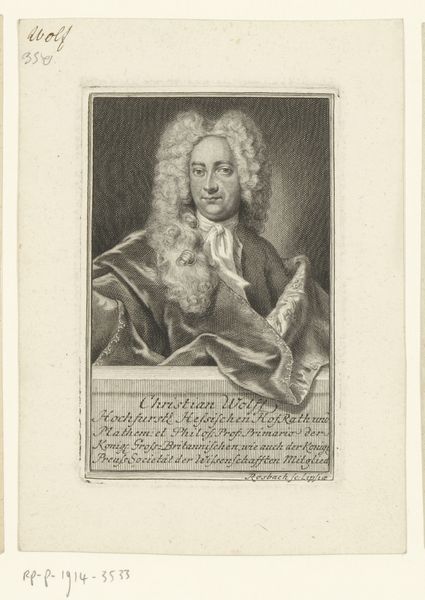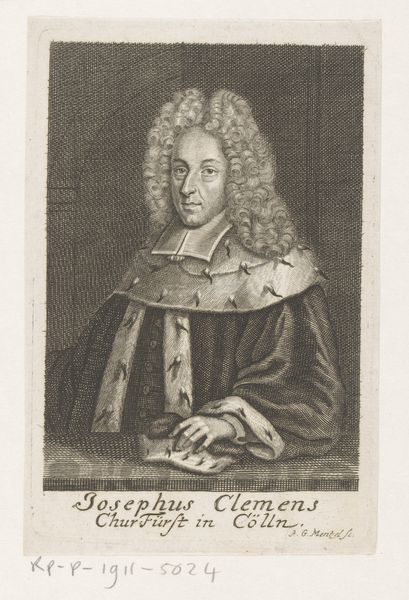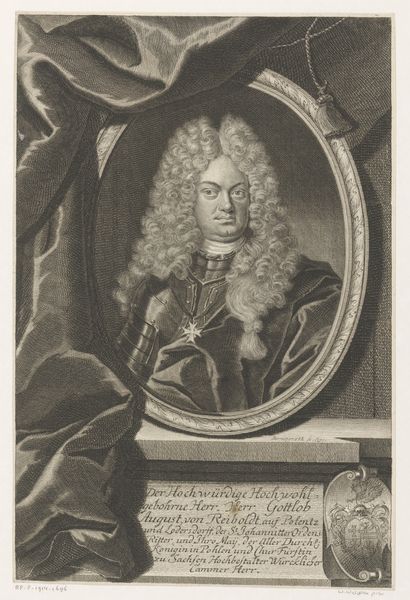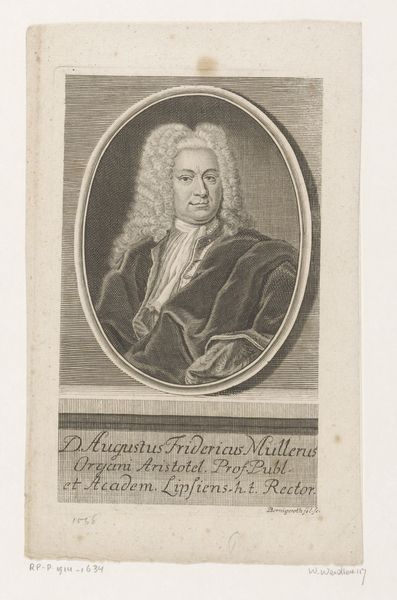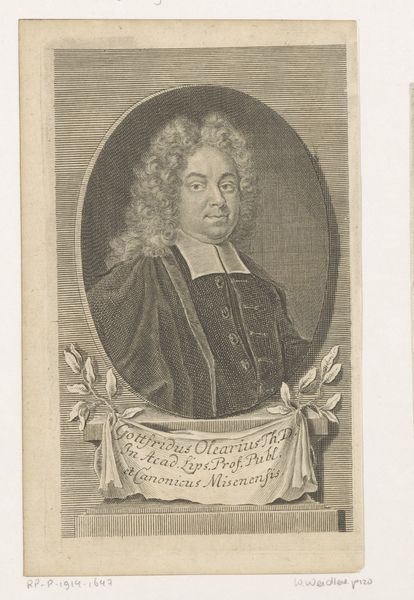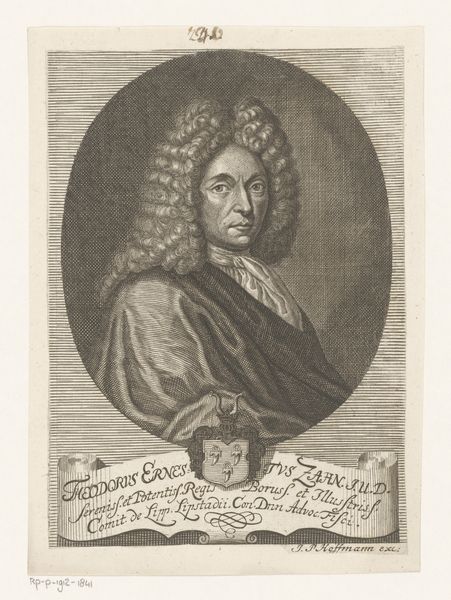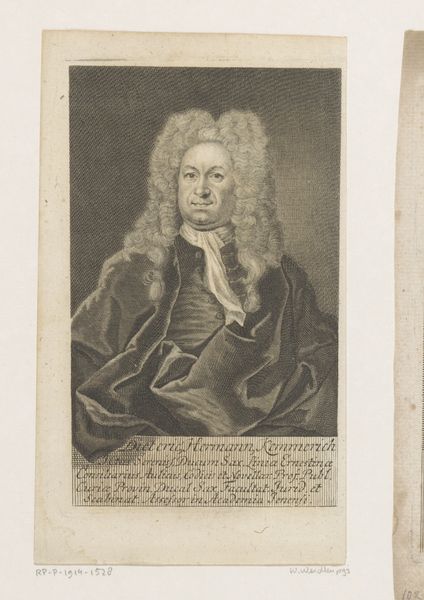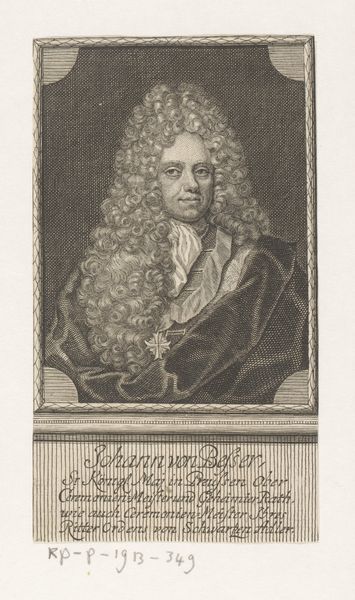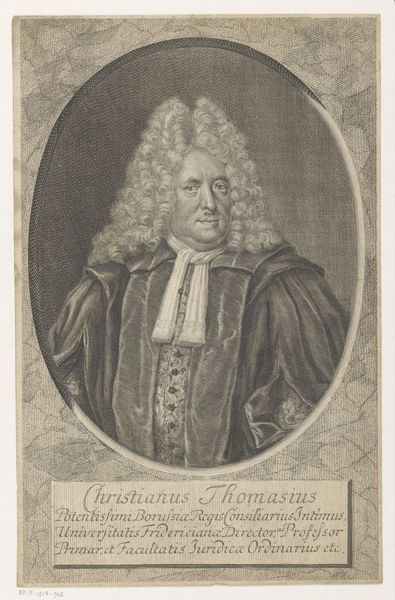
#
pencil drawn
#
photo of handprinted image
#
aged paper
#
light pencil work
#
photo restoration
#
pencil sketch
#
old engraving style
#
pencil drawing
#
limited contrast and shading
#
pencil work
Dimensions: height 167 mm, width 101 mm
Copyright: Rijks Museum: Open Domain
This is Martin Bernigeroth’s 18th-century engraving of Christian Gottfried Hofmann, made in Frankfurt. Notice Hofmann’s elaborate wig, a paramount symbol of status and power in his time. The wig, derived from earlier functional uses, evolved into a potent emblem of the elite. Consider the full-bottomed wig, cascading like a lion’s mane; it visually connected the wearer to notions of authority and virility. We can trace this symbolism to royal and religious figures throughout history—think of the halo or crown, each a claim to elevated status. Like the scepter or the throne, the wig became an indispensable prop in the theater of power. Its exaggerated form speaks to the human desire to augment oneself, to project an image larger than life, stirring in us a primal recognition of dominance. From ancient headdresses to modern hairstyles, the impulse to signal identity and status through adornment persists, a testament to the enduring power of symbols in our collective psyche.
Comments
No comments
Be the first to comment and join the conversation on the ultimate creative platform.
